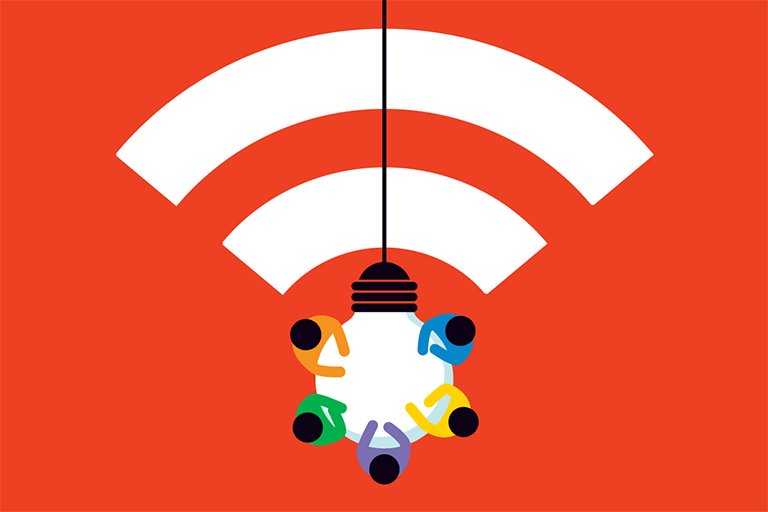Researchers examine how public channels and private groups foster innovation.
CAMBRIDGE, Mass., Sept. 12, 2023 — According to research released today in MIT Sloan Management Review, by understanding the unique paths that digital tools afford for creativity, managers can continue to foster innovation, even in the digital workplace. When groups use tools such as Slack and Teams, their choices to collaborate in either public or private channels will provide inherent possibilities for distinct paths to produce different creative outcomes.
“Much like physical office designs have changed over the years to spur employee innovation from walled cubicles to open environments, so too are there choices in digital collaboration tools with important implications for members of public channels and private groups,” asserts Wietske Van Osch, Canada Research Chair in Enterprise Social Media and Digital Collaboration at HEC Montreal and an associate professor at Michigan State University.
What seems like a simple decision — making a private group or a public group via collaboration tools — can set teams on different paths toward either incremental or breakthrough innovations.
Developmental creativity involves combining or expanding existing concepts to produce new outcomes. In these instances, collaborating in public channels has been found to be more pertinent. Disruptive creativity, which involves the creative destruction of an object or problem so that a new view of the object or problem emerges, is more likely to grow from groups that set communications to private.
The interactions studied and released in “The Profound Influence of Small Choices in Digital Collaboration” suggest that when these paths are misaligned, creativity tends to stall.
Media Contact: Tess Woods
This research is featured in MIT Sloan Management Review’s Fall 2023 issue. Michigan State University users may access the publication courtesy of the MSU Libraries.
